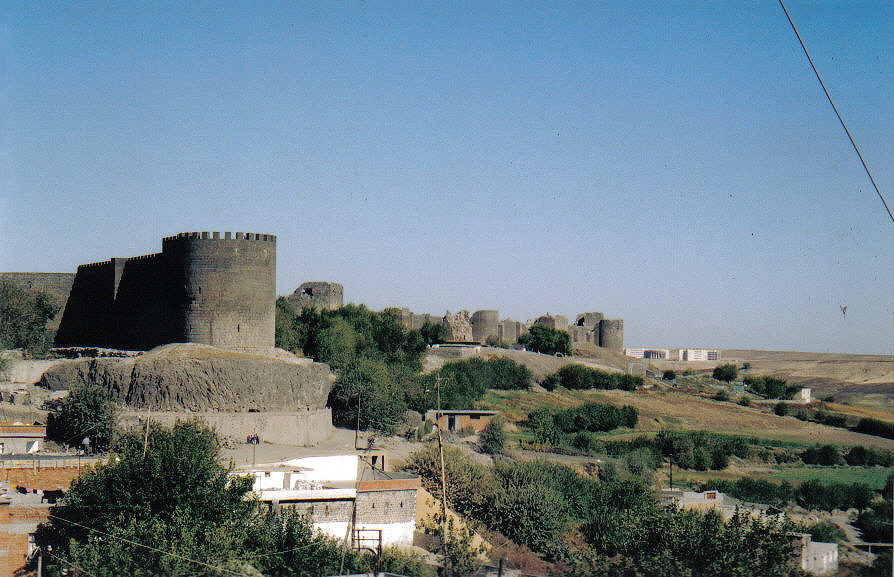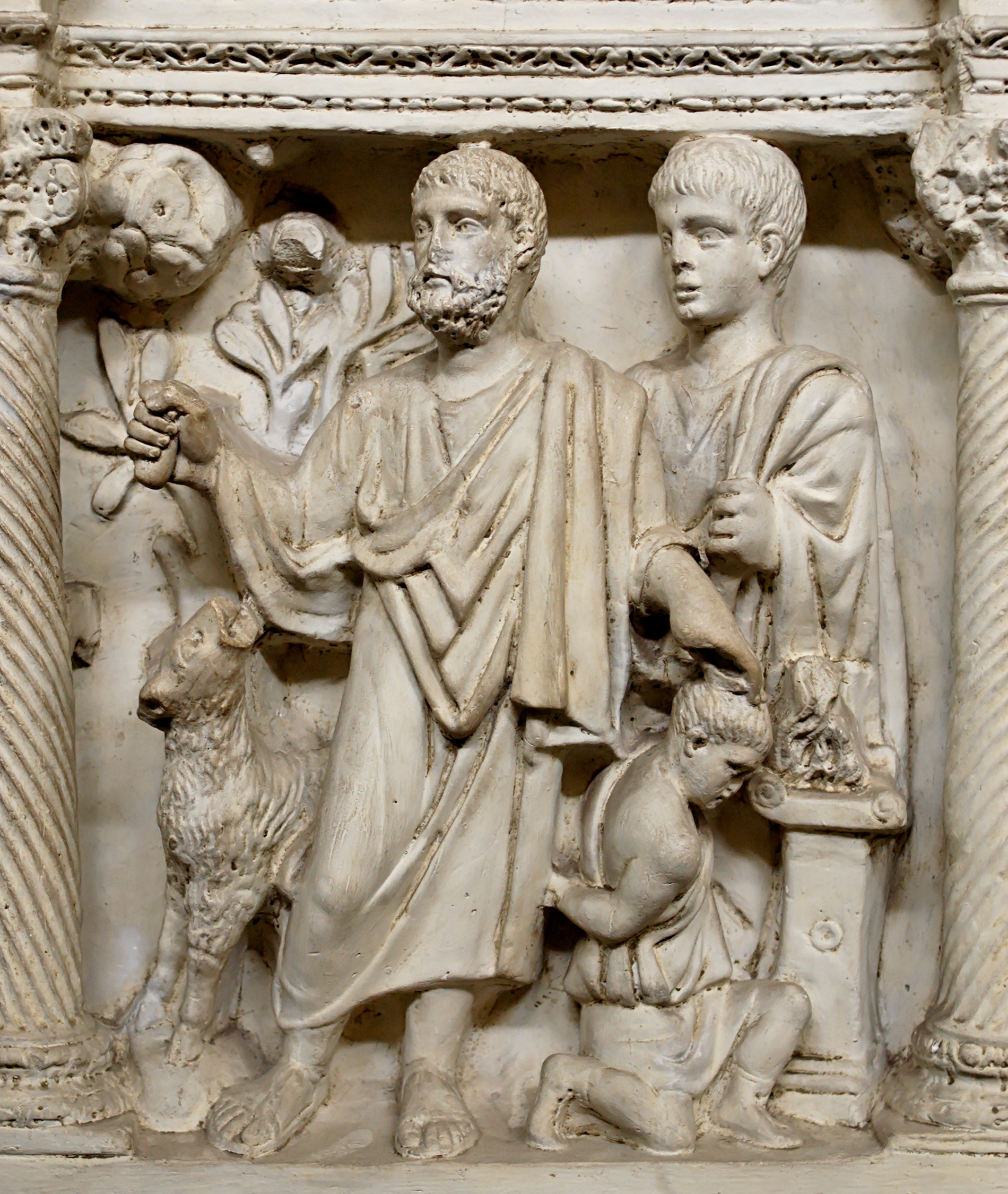|
359
__NOTOC__ Year 359 (Roman numerals, CCCLIX) was a common year starting on Friday of the Julian calendar. At the time, it was known as the Year of the Consulship of Eusebius and Hypatius (or, less frequently, year 1112 ''Ab urbe condita''). The denomination 359 for this year has been used since the early medieval period, when the Anno Domini calendar era became the prevalent method in Europe for naming years. Events By place Roman Empire * King Shapur II, Shapur II the Great of the Sassanid Empire, Persian Empire invades southern Kingdom of Armenia (antiquity), Armenia. The Romans implement a scorched earth policy and place strong guards at the Euphrates crossings. * Siege of Amida (359), Siege of Amida: Shapur II besieges the Roman fortress of Amida (Roman city), Amida (modern Diyarbakir). After seventy-three days the city is conquered and the population is massacred by the Persians. Ammianus Marcellinus is a fortunate survivor and flees to Singara (Iraq). * The first ... [...More Info...] [...Related Items...] OR: [Wikipedia] [Google] [Baidu] |
Council Of Rimini
The Council of Ariminum, also known as the Council of Rimini, was an early Christian church synod in Ariminum, modern-day Rimini, in 359. Called by Roman Emperor Constantius II to resolve the Arian controversy, the Council of Ariminum for western bishops paralleled the Council of Seleucia for eastern bishops. Though the Council of Ariminum concluded in favour of the Nicene Creed by 21 July 359, its consensus was overturned on 10 October 359, when the council's envoys to Constantius accepted a Homoean creed. Bishops remaining at Ariminum were forced to assent to the creed. Pope Liberius later declared that the Council of Ariminum was held without authority. Background In 358, the Roman Emperor Constantius II requested two councils, one of the western bishops of the Roman Empire at Ariminum (modern-day Rimini), and one of the eastern bishops,Philostorgius, in Photius, ''Epitome of the Ecclesiastical History of Philostorgius'', book 4, chapter 10. planned for Nicomedia but event ... [...More Info...] [...Related Items...] OR: [Wikipedia] [Google] [Baidu] |
Siege Of Amida (359)
The siege of Amida was a military investment of the Roman fortified frontier city of Amida (modern Diyarbakır, Turkey) by the Sasanian Empire. It took place in AD 359 when the Sasanian army under king Shapur II invaded the eastern provinces of the Roman Empire. Shapur wanted to exploit the absence of the Roman Emperor Constantius II who was overseeing affairs in the western part of the Empire. The city fell after a siege of 73 days. Background Ammianus Marcellinus, a Roman army officer, provided a vivid description of the siege in his work (''Res Gestae''). Ammianus served on the staff of Ursicinus, the Magister Equitum (master of horse) of the East, during the events of the siege. Persian When Shapur II took control of the Sasanian Empire, he sought to regain old territories previously lost to the Roman Empire. After crushing the Arabs in the south, Shapur II had to fight for a decade against invaders called the Xionites. He was successful in his efforts, asserting his d ... [...More Info...] [...Related Items...] OR: [Wikipedia] [Google] [Baidu] |
Constantius II
Constantius II (; ; 7 August 317 – 3 November 361) was Roman emperor from 337 to 361. His reign saw constant warfare on the borders against the Sasanian Empire and Germanic peoples, while internally the Roman Empire went through repeated civil wars, court intrigues, and usurpations. His religious policies inflamed domestic conflicts that would continue after his death. Constantius was a son of Constantine the Great, who elevated him to the imperial rank of '' Caesar'' on 8 November 324 and after whose death Constantius became ''Augustus'' together with his brothers, Constantine II and Constans on 9 September 337. He promptly oversaw the massacre of his father-in-law, an uncle, and several cousins, consolidating his hold on power. The brothers divided the empire among themselves, with Constantius receiving Greece, Thrace, the Asian provinces, and Egypt in the east. For the following decade a costly and inconclusive war against Persia took most of Constantius's time and at ... [...More Info...] [...Related Items...] OR: [Wikipedia] [Google] [Baidu] |
Ammianus Marcellinus
Ammianus Marcellinus, occasionally anglicized as Ammian ( Greek: Αμμιανός Μαρκελλίνος; born , died 400), was a Greek and Roman soldier and historian who wrote the penultimate major historical account surviving from antiquity (preceding Procopius). Written in Latin and known as the '' Res gestae'', his work chronicled the history of Rome from the accession of Emperor Nerva in 96 to the death of Valens at the Battle of Adrianople in 378. Only the sections covering the period 353 to 378 survive. Biography Ammianus was born in the East Mediterranean, possibly in Syria or Phoenicia, around 330, into a noble family of Greek origin. Since he calls himself ''Graecus'' ( Greek), he was most likely born in a Greek-speaking area of the empire. His native language was Greek, but he also knew Latin. The surviving books of his history cover the years 353 to 378. Ammianus began his career as a military officer in the Praetorian Guard, where he gained firsthand exper ... [...More Info...] [...Related Items...] OR: [Wikipedia] [Google] [Baidu] |
Shapur II
Shapur II ( , 309–379), also known as Shapur the Great, was the tenth King of Kings (List of monarchs of the Sasanian Empire, Shahanshah) of Sasanian Iran. He took the title at birth and held it until his death at age 70, making him the List of longest-reigning monarchs, longest-reigning monarch in History of Iran, Iranian history. He was the son of Hormizd II (). His reign saw the military resurgence of the country and the expansion of its territory, which marked the start of the first Sasanian golden era. Thus, along with Shapur I, Kavad I and Khosrow I, he is regarded as one of the most illustrious Sasanian kings. His three direct successors, on the other hand, were less successful. At the age of 16, he launched enormously successful military campaigns against Arab insurrections and tribes. Shapur II pursued a harsh religious policy. Under his reign, the collection of the Avesta, the sacred texts of Zoroastrianism, was completed, heresy and apostasy were punished, and Chri ... [...More Info...] [...Related Items...] OR: [Wikipedia] [Google] [Baidu] |
Arianism
Arianism (, ) is a Christology, Christological doctrine which rejects the traditional notion of the Trinity and considers Jesus to be a creation of God, and therefore distinct from God. It is named after its major proponent, Arius (). It is considered Heresy in Christianity, heretical by most modern mainstream branches of Christianity. It is held by a minority of modern denominations, although some of these denominations hold related doctrines such as Socinianism, and some shy away from use of the term Arian due to the term's historically negative connotations. Modern denominations sometimes connected to the teaching include Jehovah's Witnesses, some individual churches within the Churches of Christ (including the movement's founder Barton W. Stone), as well as some Hebrew Roots Christians and Messianic Judaism, Messianic Jews (although many Messianic Jews also follow Nicene Christianity). It is first attributed to Arius (), a Christian presbyter who preached and studied in Ale ... [...More Info...] [...Related Items...] OR: [Wikipedia] [Google] [Baidu] |
Sarcophagus Of Junius Bassus
The Sarcophagus of Junius Bassus is a marble Early Christian art, Early Christian sarcophagus used for the burial of Junius Bassus Theotecnius, Junius Bassus, who died in 359. It has been described as "probably the single most famous piece of early Christian relief sculpture." The sarcophagus was originally placed in or under Old St. Peter's Basilica, was rediscovered in 1597, and is now below the modern basilica in the Museo Storico del Tesoro della Basilica di San Pietro (Museum of Saint Peter's Basilica) in the Vatican City, Vatican. The base is approximately 4 x 8 x 4 feet. Together with the Dogmatic sarcophagus in the same museum, this sarcophagus is one of the oldest surviving high-status sarcophagi with elaborate carvings of Christian themes, and a complicated iconography, iconographic programme embracing the Old Testament, Old and New Testaments. Junius Bassus Junius Bassus was an important figure in late antique Rome, a senator who was in charge of the government o ... [...More Info...] [...Related Items...] OR: [Wikipedia] [Google] [Baidu] |




